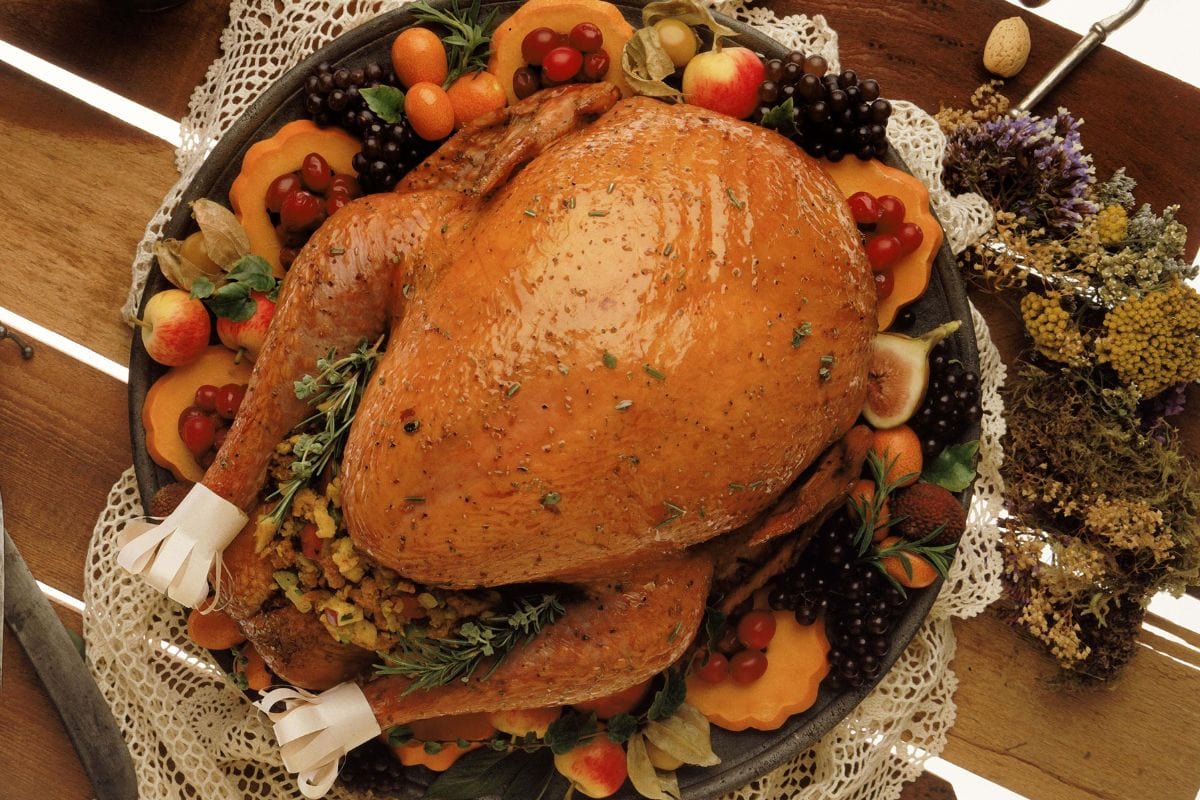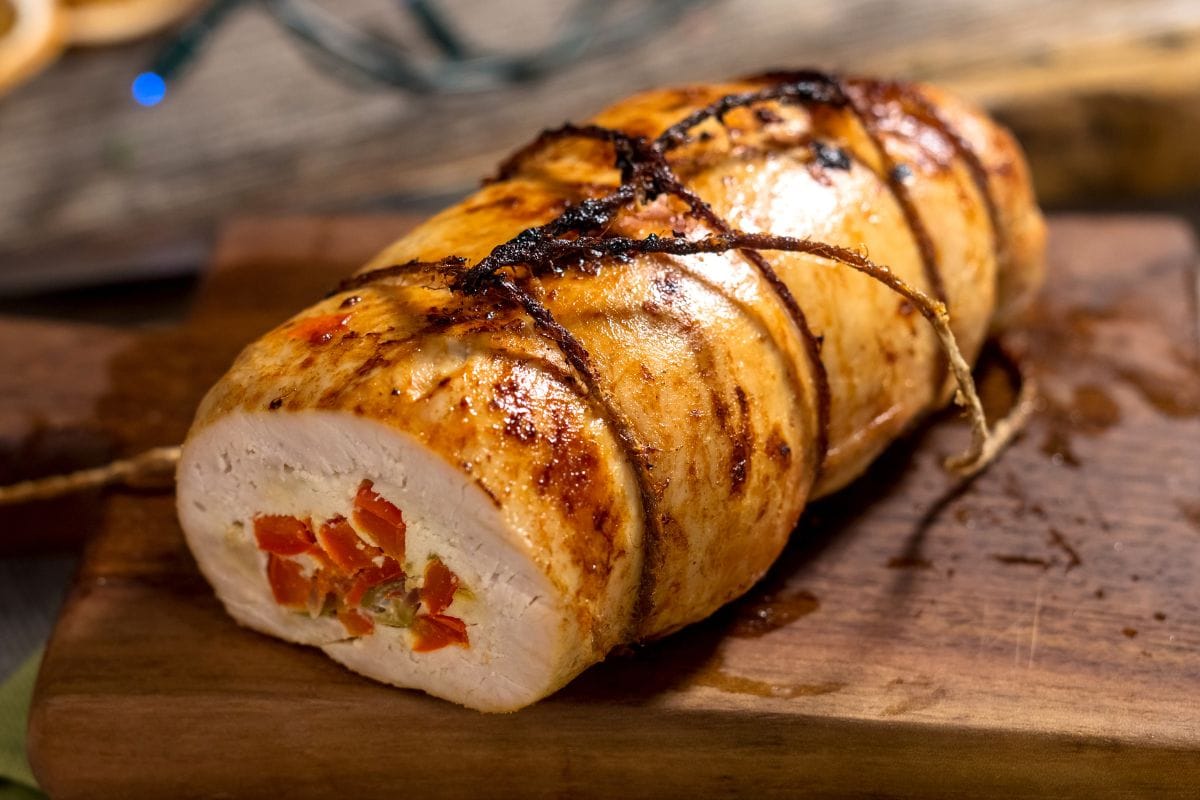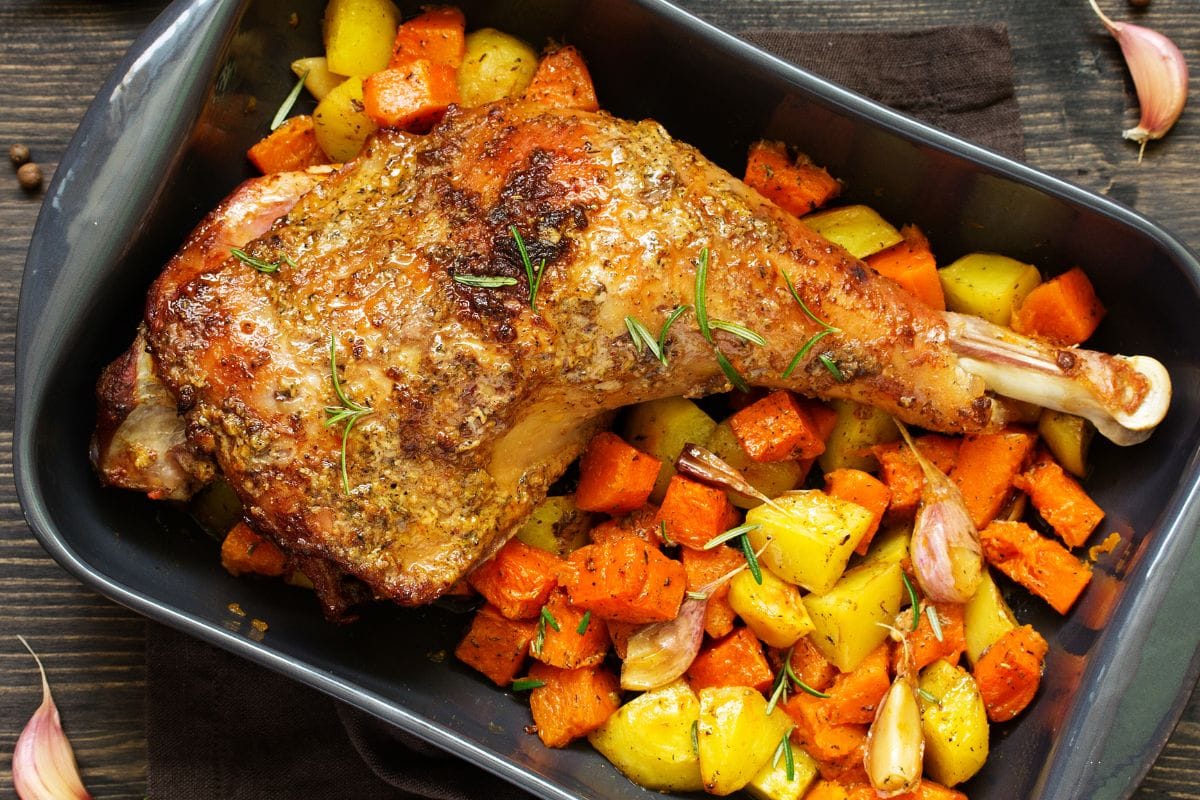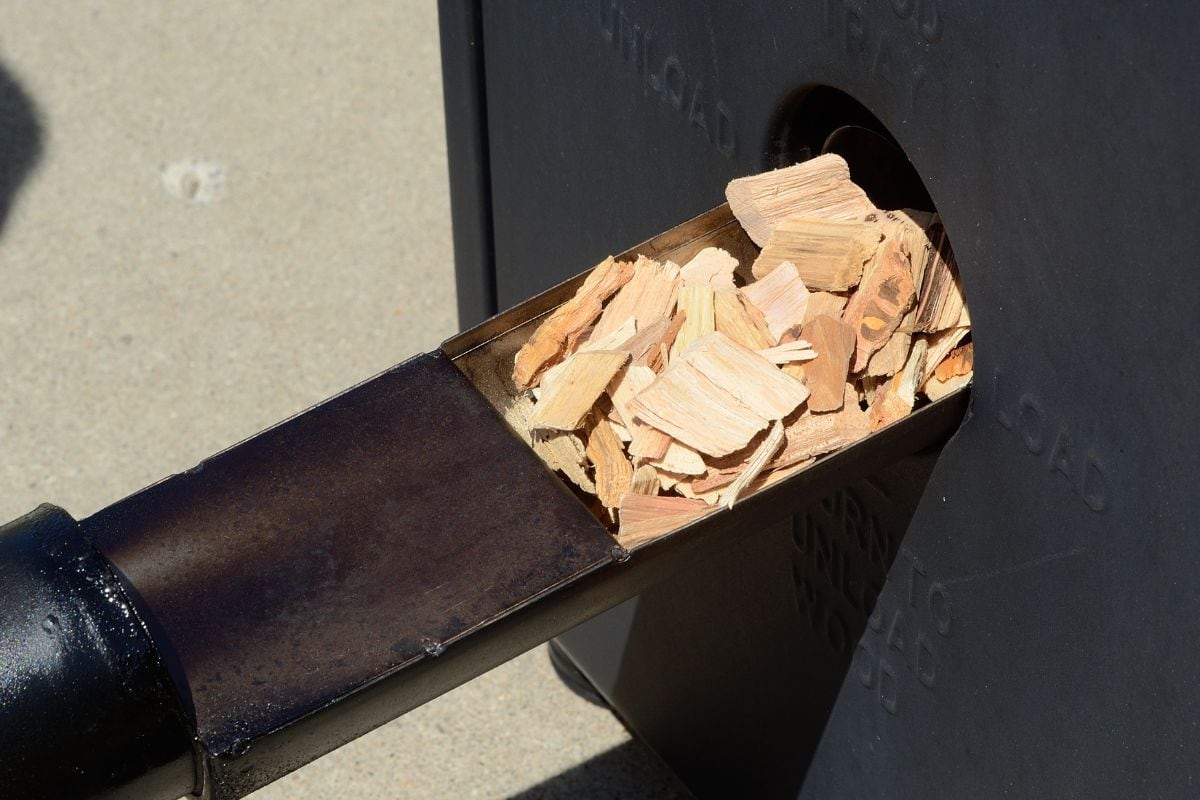As a lover of all things smoked, and an experienced pitmaster with formal culinary training, believe me when I say the best wood for smoking turkey is hickory. Having tried and tested various kinds of wood, I have found that the rich, smoky flavor and subtle nuttiness of hickory perfectly complement the taste of turkey. Of course, the type of wood you choose for smoking turkey is entirely up to your taste and preferences.
So, in this article, I’ll be exploring the best woods for smoking turkey, as well as offering tips and tricks to help you achieve a perfectly smoked turkey every time. So, get ready to take your turkey game to the next level.

There are two main categories of wood for smoking turkey: fruitwoods and hardwoods.
Fruitwoods, as the name, suggests comes from fruit trees. Meanwhile, hardwoods come from deciduous trees.
Note, however, that all fruit woods mentioned in this section are also categorized as hardwood. However, the special thing about them is they come from fruit-producing trees. So, they have some extra-sweet smokiness.
Let’s dive deeper into each type, starting with hardwoods.
Hardwoods are denser and produce a stronger wood smoke flavor than woods from trees that bear fruit.
Here are the top three natural hardwood for smoked turkey:
Fruitwoods are sweet woods with milder density than other hardwoods.
These woods are perfect for smoking poultry in general. They have a lighter, sweeter flavor than pure hardwood and complement the delicate taste of white meat like turkey.
Here are my favorite top three fruit woods for smoking turkey:
The best smoking woods for turkey breast are those that provide a mild, sweet flavor that won’t overpower the turkey’s natural flavors.
In that case, some of the most popular woods for smoked turkey breast are applewood and cherrywood. Hickory wood is also a popular choice for smoking turkey breast.
In the recipe below, you’ll find out how I use applewood for smoked turkey breast.
Preheat your electric smoker to 225°F. While the smoker is heating up, start preparing your turkey breast. I often begin by rinsing and patting it dry with paper towels. Then, rub the turkey breast with olive oil, making sure to coat it evenly.
In a small bowl, mix the kosher salt, black pepper, smoked paprika, garlic powder, onion powder, thyme, and rosemary. Sprinkle the spice mixture over the turkey breast, making sure to coat it on all sides.
Once the smoker has reached the desired temperature, place the turkey breast on the smoker grates. Add the soaked applewood chips to the smoker box or directly onto the hot coals if you use a charcoal smoker.
Close the lid of the smoker and smoke the turkey breast for approximately 2 to 3 hours, or until the internal temperature of the turkey breast reaches 165°F.
To check the internal temperature of the turkey breast, insert the temp probe into the thickest part of the meat. If the temperature has not reached 165°F, continue to smoke the turkey breast until it reaches the desired temperature.
Note: I made this recipe assuming you have a smoker with an integrated meat probe. If you’re using an old-school smoker with no meat probe, I recommend getting a manual instant-read thermometer like the Alpha Grillers thermometer.
Once the turkey breast has reached 165°F, remove it from the smoker and let it rest for 10-15 minutes before slicing and serving.
Enjoy your sweet smoked applewood turkey breast with your favorite sides. You could use mashed potatoes, green beans, roasted sweet potatoes, or cornbread.

Again, the best wood to make smoked turkey thighs is hickory for me.
Other woods, such as mesquite, can be used. However, they may produce a stronger, more intense flavor that can be overwhelming for the delicate taste of turkey thighs.
In a small mixing bowl, combine the paprika, garlic powder, onion powder, chili powder, salt, black pepper, and brown sugar. Mix well. Rub the spice mixture over the turkey thighs, ensuring every part is coated. Let the turkey thighs rest at room temperature for 20-30 minutes.
Preheat the smoker or grill to 250°F. Add some wood chips to the smoker, depending on your preferred wood flavor. Hickory, once again, is a good choice for this recipe. Apple or pecan wood is also welcome.
Place the turkey on the smoker, and close the lid. Smoke the turkey meat for 2-3 hours or until the internal temperature of the thickest part of the meat reaches 165°F. Use your meat thermometer or smoker’s built-in meat probe to check the temperature.
While the turkey thighs are smoking, take the time to make the BBQ sauce. In a small mixing bowl, combine the BBQ sauce, apple juice, apple cider vinegar, Worcestershire sauce, and honey and mix.
After the turkey thighs have smoked for 2-3 hours, brush the BBQ sauce all over the thighs. Close the lid and continue smoking for another 30 minutes or until the sauce has caramelized and the internal temperature has reached 175°F.
Once the turkey thighs are done, remove them from the smoker or grill and wrap them in aluminum foil. Let the turkey thighs rest before slicing to allow the juices to redistribute.

When choosing the best wood for smoking turkey, there are a few things to consider to achieve that perfect flavor.
We’ve talked about what your wood should offer and the various types available. Now let’s talk about making this choice based on your smoker type, the turkey size, and the wood types:
As a general rule of thumb, you’ll need about one cup of wood chips or chunks for every 45 minutes of smoking. You’d need at least 5 cups for smoking a 12-pound turkey. However, the amount of wood you need to smoke your turkey will depend on the size of the turkey and the type of smoker you’re using.
If you’re using a gas smoker, you’ll need to use wood chips instead of wood chunks. Just ensure that you soak the wood chips in water for about 30 minutes before using them. You’ll need to add a handful of soaked wood chips to the smoker box every 45 minutes to an hour to keep the smoke going.
If you’re using a charcoal smoker, you can use either wood chunks or chips. Add 2-3 wood chunks or a handful of wood chips to the charcoal every 45 minutes to an hour.
It’s important not to overdo it with the wood, as too much smoke can make the turkey taste bitter or have overly smoky flavors. Experiment with the amount of wood you use to find the right balance of smoke flavor for your taste.

To keep your turkey moist, brine it for 12-24 hours before smoking to lock in moisture. Use a meat thermometer to ensure it’s fully cooked and avoid overcooking. Basting with butter or oil during the smoking process can also help to keep the turkey moist.
To get the most smoke flavor in your turkey, use strong-flavored wood like hickory or mesquite. Apply a dry rub or inject the turkey with a marinade to help the smoke flavor to penetrate the meat. Smoke the turkey for a longer time and avoid opening the smoker too often.
The best turkey cut for smoking is the whole turkey or the turkey breast. They are quite big and suitable for low and slow cooking that smokers require.
Turkey breasts are also easier to carve, making them a popular option for smaller gatherings. They’re however leaner than other parts of the turkey, which means you’d have to cook it a bit faster to avoid drying out.
It’s best to smoke a turkey low and slow at a temperature between 225-275°F. This allows the turkey to cook evenly, and the slow smoking process infuses the meat with the famed smoky flavor. Smoking a turkey fast at a high temperature can lead to uneven cooking and dry, tough meat.
The best charcoal for smoking a turkey is high-quality lump charcoal, like the Royal Oak Lump Charcoal. Lump charcoal is made from natural wood, which burns hotter and cleaner than briquettes. It also produces less ash, so you’ll spend less time cleaning your smoker. Avoid using charcoal that contains chemicals or fillers.
Choosing the right wood is essential for smoking turkey to perfection. In this guide, we explored the types of woods that work best for smoking a turkey and their characteristics. I also shared tips for choosing the best wood for your smoker, as well as tips for smoking turkey with different woods.
Each of the woods offers unique flavors and characteristics that can enhance the taste of your turkey. Whether you’re looking for a sweet, fruity flavor or a strong, smoky taste, there’s a wood that meets whatever your taste bud prefers.
Finally, I suggest experimenting with different woods to find the ideal match for your taste profile. Don’t be afraid to try different combinations and techniques until you find the ideal type or mix that works for you.